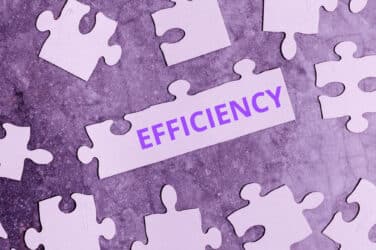

UK regulators have said market users and liquidity providers in the sterling exchange-traded derivatives market should switch from Libor after 17 June this year.
The Financial Conduct Authority and Bank of England said in a statement they support and encourage market users and liquidity providers in the sterling exchange traded derivatives market to switch the default traded instrument to Sonia.
The FCA and Bank of England encourage market users and liquidity providers in the sterling exchange traded derivatives market to switch the default traded instrument to SONIA instead of LIBOR. https://t.co/4COdpawJ7E
— Financial Conduct Authority (@TheFCA) May 13, 2021
“A key milestone recommended by the Working Group on Sterling Risk-Free Reference Rates is to cease initiation of new GBP Libor exchange traded derivatives expiring after 2021 by end-Q2 2021, other than for risk management of existing positions,” added the statement. “The Working Group milestones have supervisory backing from the PRA and FCA as set out in the recent ‘Dear CEO’ letter sent to regulated firms.”
An FCA survey of market participants identified strong support for a change in the standard trading conventions, which would see Sonia rather than Libor become the default traded instrument from 17 June 2021.
After the financial crisis there were a series of scandals regarding banks manipulating their submissions for setting benchmarks across asset classes, which led to a lack of confidence and threatened participation in the related markets. As a result, regulators have increased their supervision of benchmarks and want to move to risk-free reference rates based on transactions, so they are harder to manipulate and more representative of the market.
In March this year the FCA confirmed that Libor settings will either cease to be provided by any administrator or no longer be representative immediately after 31 December 2021 for all sterling, euro, Swiss franc and Japanese yen settings, and the one-week and two-month US dollar settings. The remaining US dollar settings will end immediately after 30 June 2023. The UK has chosen Sonia as its risk-free rate while the US Alternative Reference Rates Committee (ARRC) has selected SOFR to replace US dollar Libor.
Andrew Bailey, governor of the Bank of England, said in a speech to ARCC on May 11 that the cessation dates for Libor are clearly on the horizon following the FCA’s announcement.
Andrew Bailey has given a speech about the move away from the use of LIBOR at the Alternative Reference Rates Committee – the SOFR symposium.
Read the speech here:https://t.co/Yp3irIk0OY
— Bank of England Press Office (@BoE_PressOffice) May 11, 2021
“These summits have been on the horizon for over a decade and have been well signposted but they are now clearly visible, but as any climber will tell you the hardest part of mountaineering is often the descent,” he added. “It can often be more treacherous than the climb.”
Bailey warned that those looking for an easy descent by substituting Libor for credit sensitive rates that do not address all of its fundamental weaknesses risk much of the good progress that has been made.
“While these rates may offer convenience as a short-term substitution, they present a range of complex longer term risks,” he said. “And while they may remove the reliance on expert judgement, they veneer over the fundamental challenges of thin and incomplete markets through the extrapolation of data.”
Bailey detailed the progress that has been made in the transition, for example, new sterling floating rate note issuance almost exclusively references Sonia. The share of Sonia referencing swaps in the sterling market has regularly dominated the Libor equivalent for 10 months and the dealer-to-dealer market has completed a transformation in risk traded with Sonia in excess of 70% versus Libor, with progress across all tenors.

Andrew Bailey, Bank of England
“If we remove the direct market element and focus on pure interdealer market, we estimate this is now in excess of 90% Sonia,” he added. “Today is a further landmark, with another ‘Sonia first’ initiative as the interdealer market looks to shift liquidity in these more complex non-linear products from Libor to Sonia ahead of the upcoming end-Q2 milestone to cease new Libor linked issuance.”
However, lending markets across all jurisdictions have presented challenges but overnight Sonia compounded in arrears is now being actively used across billions of pounds of sterling facilities.
Bailey warned that firms regulated by the Prudential Regulatory Authority (PRA) who may be guilty of ‘lazy’ behaviors in unnecessarily sustaining Libor linked contracts will be treated in the same way as firms demonstrating any other risk management or governance failings.
He continued that it is imperative to have a clear path for existing or ‘legacy’ Libor contracts to transition in a robust manner and legislation is to progressing across jurisdictions to establish safety nets for those contracts that cannot actively transition ahead of cessation.
“Strong adherence to the ISDA IBOR fallbacks protocol, in the US and UK in particular, has been encouraging,” said Bailey. “But more can and should be done – the protocol remains open for entities that have not yet adhered and it is critical that equally robust fallback arrangements are adopted in cash products too.”
SOFR
In the UK there is a clear consensus that credit sensitive rates are not required or wanted as part of sterling Libor transition and Bailey said that, in his view, this is sensible. Bailey added that the use of SOFR in US dollar markets is growing and liquidity attracts liquidity.
“There is also broad international consensus to support the US authorities and limit new use of US dollar Libor from the end of this year,” Bailey said. “So with the summit in sight let’s reflect on how far we have come in what was always a challenging climb, but let’s also make sure we complete the job properly and safely descend the mountain that is Libor.”
Although the FCA said five US dollar Libor tenors will continue to be published on a representative basis until 30 June 2023, regulators have said they expect US-supervised entities to stop using the rate for new trades after the end of this year.

Edwin Schooling Latter, FCA
Edwin Schooling Latter, director of markets and wholesale policy at the FCA, stressed at the ISDA AGM that the publication of US dollar Libor will not be extended beyond June 2023.
He said: “But even before end-June 2023 – in fact, by the end of this year – the use of US dollar Libor, like the other Libor currencies, needs to stop in all new contracts,”
Tom Wipf, vice chairman of institutional securities at Morgan Stanley and chair of ARRC said at the ISDA AGM the he expects liquidity in SOFR to increase towards the end of this year.
“Between June and December, whether it be the best practice recommendation or the supervisory hard stop, we should see a pretty meaningful transition,” Wipf added. “I do think the driver will be liquidity and the markets will go to where liquidity is – which in the US will be SOFR.”
Other rates
SOFR is an overnight rate money market repo rate while the most widely used Libor rates in US dollars are 30-, 60- and 90-day rates.
Other alternatives to SOFR have appeared including Ameribor from the American Financial Exchange. The AFX benchmark allows small banks to lend to and borrow from each other under mutual lines of credit overnight or for 30-day terms. Bloomberg has also launched its short term bank yield index , BSBY, to meet market demand for a credit sensitive index to serve as a supplement to SOFR.
I get concerned that folks have used the lack of availability of a forward looking term rate to stall or delay LIBOR transition. Forward looking term will play a role, but in a very limited use case – it’s not a broad market need, says Jack Hattem @blackrock #isdaagm
— ISDA (@ISDA) May 10, 2021
Sonali Theisen, head of FICC e-trading and market structure at Bank of America, said on a panel at the ISDA AGM that it is prudent to have a credit-sensitive rate alongside SOFR.
“It is the smoothest thing for markets as we undertake this massive paradigm shift,” she added. “This will likely help accelerate the transition away from Libor.”
For the overwhelming majority of derivatives, compounding in arrears via risk-free rates will become the market standard. This will be the most liquid instrument so any divergence from that will come at a cost in liquidity, says Chirag Dave @GoldmanSachs #isdaagm @ISDAConferences
— ISDA (@ISDA) May 10, 2021
Nearly half, 46% of the audience of the ISDA AGM, said in a poll interest rate portfolios will primarily comprise of RFRs with overnight index swap conventions in a pool, with a mix of RFRs with other conventions and other alternatives.






